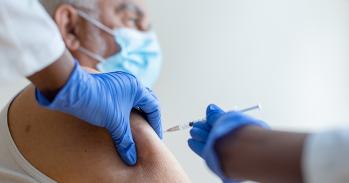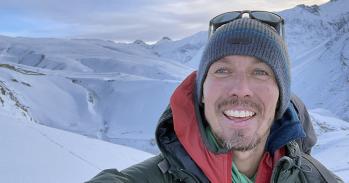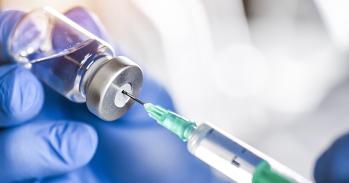
Operations Director Karl Wilson has helped lead a herculean effort to transform a standard laboratory into a bespoke testing centre, to aid the national response against COVID-19. For him, there was never any question about whether we should - or could - do this.
Operations Director Karl Wilson has helped lead a herculean effort to transform a standard laboratory into a bespoke testing centre, to aid the national response against COVID-19. For him, there was never any question about whether we should - or could - do this.
Everyone took real ownership of their roles and such pride in their work. I think everyone is really pleased with what we’ve accomplished
Karl Wilson
On Friday 20 March, Karl Wilson, received a phone call which would turn his life upside-down for the next six weeks.
“After a hectic week of closing down labs across the University, I was adjusting to my first day of working from home,” remembers Wilson. “I’d managed a couple of hours work in my spare room (having just set up my new desk with the ‘help’ of my four year old daughter), when I received a call to say that the University would be partnering with pharmaceutical giants AstraZeneca and GSK to set up a testing centre for Covid-19, in the newly built Anne McLaren Building.
“I knew it would be a huge undertaking but there was no question in my mind about it. It was just a case of ‘yes, let’s do this.’”
An hour later Wilson found himself at the lab discussing floor plans, safety cabinets and sample-prepping-robots. “It’s been a whirlwind ever since,” he says.
A project of this scale would ordinarily take around six months to complete but incredibly the lab was ready to begin trialling tests in just three weeks. Wilson explained that this phenomenal feat was testament to the positive approach of everyone involved in the project. “There’s never been any hesitation, never a question of ‘what’s in it for me?’ It’s always just been a case of ‘how can I help?’”
It’s the small snippets of personal stories which demonstrate the dedication to the project of every individual involved. Wilson shares about a Programme Manager who left his family to move temporarily to Cambridge, to set up the IT infrastructure key to running the robotics. In another instance of generosity, two building firms, Mace and Mick George worked together to create a vital walkway to the test centre at short notice, and then waived fees of approximately £20,000. And from the very moment the project began, manufacturers have developed and supplied complex scientific equipment in a fraction of the time it would usually have taken them to do so.
Wilson says that the timely completion of the test centre was only possible through teamwork, collaboration, flexibility and the sheer number of hours put in by employees. It’s been estimated that 2292 hours have been worked overall to get us to this stage.
Wilson describes the feeling on site as being “very much a ‘camp vibe.’” He says, “You're thrusting a lot of people who don't know each other into a new situation, under very unusual circumstances. We were typically on site 13 hours a day – working together, talking together, eating together and taking time-out together. We all really bonded – you’d never have known we’d met for the first time just a few weeks before – it now feels like we’ve been friends for years.”
When days were tough it was the ‘why’ that kept the teams going. “We were just thinking ‘the quicker we get the centre open, the sooner we can help the country move forward, get out of lockdown, and hopefully return to some semblance of normality,” says Wilson.
With the project nearing completion Wilson is finally able to catch his breath and begin to reflect on what has been both the greatest challenge and most rewarding venture of his career to date. He credits the success of the project to every individual involved who “just wanted to do a great job.”
“Everyone took real ownership of their roles and such pride in their work,” he says. “I think everyone is really pleased with what we’ve accomplished.
“We’re excited to see the lab in action and, in a sense, see the fruits of our labour. And one day, hopefully in the not too distant future, we’re all looking forward to going out together, to raise a toast to the success of a job well done.”
This article is part of a series in which we speak to some of the many Cambridge researchers tackling COVID-19. For other articles about our latest COVID-19-related research, click here.

The text in this work is licensed under a Creative Commons Attribution 4.0 International License. Images, including our videos, are Copyright ©University of Cambridge and licensors/contributors as identified. All rights reserved. We make our image and video content available in a number of ways – as here, on our main website under its Terms and conditions, and on a range of channels including social media that permit your use and sharing of our content under their respective Terms.




